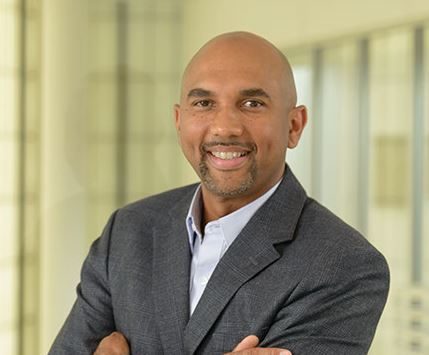Mark’s Story
 Photo by The National Initiative on Mixed-Income Communities.
Photo by The National Initiative on Mixed-Income Communities.Mark Joseph has spent 15 years analyzing the potential promise and pitfalls of mixed-income communities. In theory, a mixed-income development approach can allow for the transformation of isolated, forgotten neighborhoods and the lives of the residents who live there, says Joseph, a professor at Case Western Reserve University in Cleveland. But in communities across the country, a very different story has played out, he says. Again and again, ventures that move more affluent residents into low-income neighborhoods lead to social isolation and friction, often causing the original residents to feel marginalized and judged in the communities they’ve lived in for decades.
HOPE SF, Joseph believes, can be different.
“This partnership wants to get it right, I have no doubt in my mind,” he said. “I really believe HOPE SF can demonstrate a level of success with this that will be a model for the rest of the nation.”
For the past ten years, Joseph and his team at the National Initiative on Mixed-Income communities have worked with HOPE SF to offer feedback, evaluation and technical assistance, with the goal of ensuring that the redevelopment of the city’s old public housing is both inclusive and racially equitable. Currently, the team is heavily focused in Sunnydale with Mercy Housing to develop practices and strategies to strengthen the sense of community among neighbors.
This is not a simple task. Joseph first became interested in the impact of public housing programs transforming to mixed-income development 25 years ago, when he was running a youth program at a public housing site in Atlanta. One summer, it was announced that the site was slated for mixed-income development.
“All the families were asking, what does this mean for us?” he remembers.
That question stuck with him as well as the reality that it ended up meaning displacement for many of the families. A decade later, when he received a post-doc fellowship at the University of Chicago, he had the opportunity to focus intensively on this topic. He decided to try to answer their question.
Ideally, Joseph says, the benefits of mixed income developments could include the physical transformation of neighborhoods that have been isolated and poorly maintained for generations. That transformation could then lead to the improvement of lives of residents, removing structural barriers, offering them a different social and economic trajectory, and allowing them to see themselves as contributing members of a thriving city. Such developments could connect people across boundaries of race and class, letting them see a shared future with common values and aspirations.
Unfortunately, he says, that’s not normally what happens. Across hundreds of communities that have attempted mixed income developments, such idyllic success has basically never been the outcome.
“That doesn’t happen by itself,” he said. “It’s not enough to just build really nice mixed-income housing, get people in there and then the rest will take care of itself.”
In fact, he says, policy has gotten far ahead of research and knowledge on this topic. While many communities have achieved physical transformation, the original residents are often left feeling marginalized and stigmatized by practices such as zero tolerance management and policing.
“At the end of the day, while you may have removed the aesthetic side of neighborhood poverty, you have perhaps reinforced and deepened the harm of structural racism and economic marginalization,” he said.
When he first visited HOPE SF a decade ago at the invitation of Fred Blackwell, then the head of the San Francisco Redevelopment Agency, he said, leaders hadn’t anticipated all the challenges and shortcomings that he’d seen happen in similar efforts elsewhere.
But he was struck by their devotion to doing right by the existing residents – and to a guiding set of principles that included resident inclusion, racial equity and the preservation of affordable housing. He says that resolve has only deepened under the leadership of Theo Miller, Director of HOPE SF, who has called the endeavor a “reparations initiative.”
“That names the truth that the existing conditions in these public housing developments were not the fault of those living there, but were the fault of the structures that isolated and marginalized those developments,” Joseph said.
Joseph knows that some of the existing residents worry about broken promises, displacement and marginalization. And he says they’re “exactly right” to be concerned if they look at what has happened in similar efforts around the country. But he believes the situation with HOPE SF is very different — and, he feels, gives reason for optimism.
“I’ve said this many times,” he said. “The best hope for achieving inclusive mixed-income development in the United States is HOPE SF.”

